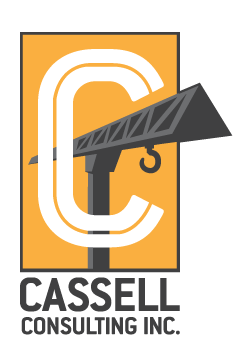BEST PRACTICES GUIDE
This “Best Practices Guide” is reprinted with the permission of Viewpoint Construction Software.
IN THE ZONE
Drive Sales and Profit by Bidding in Your Sweet Spot
Do you know your estimating sweet spot? It’s where you find advantage for profitable negotiations, where you know your strengths and weaknesses, and where you gain insight for best profit on any job.
As important and valuable as that information is, there are contractors who continue to leave questions unanswered and money on the table. Think on it … after spending time and effort to takeoff plans, collect quotes, produce an estimate, and submit a bid on time, are you ever left scratching your head? Do you find yourself wondering, “Did I miss something in that estimate that will cost me later?” or “Do I even have a shot at winning this bid?” or “Is there enough profit in there that will keep me out of trouble?”
By answering one question, “Do I know my estimating sweet spot?” you can better answer many questions that will help determine your short- and long-term success because you will know:
- What type of work you perform best (where you are most profitable)
- Which parts of a build are a perfect fit (i.e., expertise in labor or kind of build, such as hospital or plant)
- Which bids are won and which are lost – and why, whether on price, who competed, owner preferences
- Type of owner/client (pays on time, good relationship with vendors, positive track record with finances and safety, etc.)
- That owner/client understands your type of work, handles meeting coordination well and is easy to do business with
There are other “knowns” that can make up a sweet spot, but insight into just one of those elements can reveal critically important clues about better ways to manage business, including when and where to bid and find more profit.
Best Practice Advice to Find Your Bidding Sweet Spot
Are you ready to drive sales and profit by bidding in your sweet spot? Here are six pieces of best practice advice to accomplish that by improving efficiency, understanding competitors, knowing strengths, and using organized data and documentation for better decisions.
- Choose the right job to bid. How do you determine which jobs are best for your business? First, you must take the time to weigh out the differences before jumping into a bid. Michael Gillum, Product Manager of ProContractor Estimating at Viewpoint Construction Software, says: “Be sure to perform comparative analysis on all of the types of jobs that you perform. Understanding the variances between jobs will help you make informed decisions about which jobs to bid. Then, choose the path that will ultimately be the most profitable. Understanding where and why the variances in your jobs occur will help to drive profits in each of the tasks and activities you perform.”
Understanding the variances between jobs will help you make informed decisions about which jobs to bid.
Now comes the part where you identify that sweet spot for best bid success and profitable execution. That can be fleshed out in a few simple steps:
a) Look at schedule first and ask yourself:
- How much work do I currently have in progress?
- How much work needs to be scheduled?
- Would I be putting the quality of work at risk?
- Should we look at smaller or larger jobs to bid?
b) Review your history and be objective asking: What type of work do we do best?
- Type of work — If your sweet spot includes concrete or underground utilities, then you should focus on finding those types of jobs where you can be successful.
- Commercial, Industrial, Residential, Government, etc. — You may, typically, only focus on commercial work but see that the residential sector may have the types of jobs where your profit margins can grow
c) Do some research to answer: Who is on the bid list? Who are my competitors?
- Even when work is in your sweet spot, does the competition always come in very low and win?
- What is your previous experience with that particular Owner or General Contractor?
- Do you have a proven track record of knowing you can beat the competitor(s) and deliver a successful and profitable job?
“You must target what you do best, but also must bid work because of who it is when they ask you to bid,” says Rick Niemeyer, President, Niemeyer Brothers Plumbing of Phoenix, Arizona. “Maintaining good working relationships is essential to being respected, sought out, and staying busy. We focus on building relationships with respected general contractors and growing confidence there by working fairly — and can back up our bids with details as needed.”
- Properly collect, organize, and analyze bid documents. Obviously contractors accumulate many bid documents and details. How you manage them separates the organized from the agonized. Do you collect documents in paper or electronically, or a mix? Are your specifications and requirements thorough and provided upfront?
“Paperwork is the bane of every contractor,” Gillum notes. “Having the right system in place to properly manage all of the documentation on any job is essential to your success. Electronic documents are the easiest to manage and can be readily accessible to all parties via the cloud.”
“We specialize in design/build projects. So we typically don’t have a hard bid but have to design it and then put a cost to it,” says John Gallico, Director of Pre- Construction Services, Nash, Inc. of Coleman, Florida. “Because we work with architectural drawings, not your typical plumbing and mechanical drawings, there are many ‘unseen’ elements in the process as the engineer creates the drawings and the estimator uses software to overlay drawings and easily see what’s changed from one version to the next. Managing digital files using estimating software is so much more accurate and fast compared to what it would require to do by eye alone on paper. This saves us time and money at the front of the project as well as when it comes back to preconstruction from operations when there are changes to be made. So after we’ve bid a job and a change order comes in, we have to ‘find Waldo’ so to speak. The architects don’t tell us what’s changed — we have to find what’s different and bid it effectively.”
Obviously contractors accumulate many bid documents and details. How you manage them separates the organized from the agonized.
Karl Rajotte, Product Manager, MEP Estimating Viewpoint Construction Software, explains: “It’s valuable to look good to land the job — it may not be the deciding factor that lands the job, but there are likely bonus points for the contractor who has submitted a well-organized bid, with detail as requested, and including graphics that dynamically show the project (like visual assemblies or electronic plans showing the digital takeoff). This lends confidence to the relationship and sets the stage for accuracy and accountability throughout the project.”
- Review Labor and Job Conditions. In the words of Mark Twain, “Climate is what we expect, weather is what we get.” So in the world of construction, it’s valuable to plan, anticipate, evaluate, and adapt. Work with what you know and handle what happens. For best success, you must review labor and job conditions associated with the job and know location and time of year work is to be performed. Plus ask yourself “Are we good at retrofits?” or “What safety regulations are involved?” among other questions. This falls back to understanding the variances that occur between jobs. If you compare two similar jobs and the labor costs are off for a particular phase or activity, be sure you understand why this occurred. Was it weather related, crew related, or did you have the wrong tools on the job?
Rajotte adds: “By getting the takeoff and estimate done quickly, contractors cut down on overhead and gain time to focus on the pricing and labor that goes into the bid. There will always be addendums and changes coming in, so the benefit lies in getting that estimate produced as fast as possible and starting out ahead.”
Niemeyer advises: “Saving on labor is where you save money. The key is to creatively figure out how to reduce labor costs while maintaining quality. We utilize modern software products to assist here so that we know where we stand, know if we’re truly saving money, and can stay on track.”
- Stay calm and prepared for Bid Day. Bid Day is when the team and the systems come together or fall apart. Being organized with methods to easily collaborate, agree on accountability and details, and save time will add up for great success. When convening in that popular ‘war room’ on bid day to work out final numbers, multiple team members get involved to rework details and agree on the margins, with a collective eye on the countdown clock ticking away the time until the bid is due and how much time remains to get the latest numbers from subcontractors and vendors.
Gillum explains the problem with using spreadsheets on bid day: “If not utilizing estimating software, there are often multiple spreadsheets being managed to plug in final numbers. This causes mass confusion when trying to disseminate which subcontractor or vendor has the best numbers to use prior to submitting the bid. And that is added confusion on top of the typical scenario where multiple estimators are working multiple telephones to juggle numerous calls to all vendors trying to get those best numbers.”
By getting the takeoff and estimate done quickly, contractors cut down on overhead and gain time to focus on the pricing and labor that goes into the bid.
“By using software in the bidding process, estimators can send out requests for quotes swiftly, with time to negotiate and avoid those time-constraint issues that prompt stupid and costly mistakes at the last minute,” says Rajotte. “The advantage with an easy-to-use software solution is getting a precise takeoff done with speed, and using that saved time to work with subcontractors and vendors to get best pricing. Continue that process through bid day using the software to make on-the-fly changes and have more time to negotiate for a last-minute leg up.”
Of course there are very frequent visits to the war room by the owner and CFO who want to know how things are progressing — and timely answers are critical to peace … and profit!
- Have a sharp strategy and know your competition. So you know where your business is going … but winning often requires knowing your opponent or opponents as many contractors are typically bidding for the same work. Determine what they are trying to accomplish — that is to say: Why are certain competitors bidding a certain job? They may need the job just to keep their crews and equipment running, which means they will likely low-ball the job and forego any profit just to be working. Knowing this information ahead of time can help a contractor understand where their bid needs to be to win that job, as well as asses how they accomplish it – calling vendors, calling subcontractors, adjusting margins, negotiating best of the best numbers, and so on.
Plus, you want to stand out (in a good way) so that the owner or general contractor takes notice. Ask yourself “What can we do differently and what can’t the other bidders do?” Gillum explains: “Utilizing estimating software is a good example here. If a competitor is turning in a bid that is handwritten on paper and you turn in a professional looking proposal with 3-D Views, graphs, charts, BIM, etc. that was generated by software , you are going to look more professional in any comparison.”
Rajotte adds, “By mining valuable details from a robust estimating solution, contractors can make decisions based on true historic data that’s properly organized. For example, know that ‘competing bidder x’ always bids lower than anyone else and that the owner consistently chooses the lowest bidder on any job.”
Beyond details about competition, it’s critical to know about the job owners or general contractors heading up a project. You should be asking ‘Does the owner play favorites on a particular type of work? Does the owner’s financial track record paint a picture of bankruptcy in 60 days’ time?’ Having that visibility and insight into relationships, activity history, and more — whether it reveals troubling facts or favorable news — can make all the difference into winning and executing highly profitable projects.
If a competitor is turning in a bid that is handwritten on paper and you turn in a professional looking proposal with 3-D Views, graphs, charts, BIM, etc. that was generated by estimating software, you are going to look more professional in any comparison.
- Keep tuned into performance and use insights for better decisions. Just as athletes review game film after a win or loss, your team should be tracking your won-lost track record of bids and evaluating factors such as lead source of choice, profit variance on completed jobs, etc. To do this effectively and efficiently, you require tools that put historical information at your fingertips for timely and confident decision-making. According to Gillum, “Estimating software can greatly help a contractor understand how and why their business won a certain bid. When a contractor can refer to details on a dashboard to review multiple jobs at once, it makes life a lot easier than having to dig through paper files to find the information.”
Rajotte explains how leveraging contemporary estimating software allows keen insight and visibility: “With a bid dashboard, graphical snapshots, and drill-down access to bid information, contractors have a convenient way to make informed decisions quickly. Estimators and owners can quickly see real-time data about proposals due and expiring. By considering captured historical information, they can also determine if a job is worth bidding in the first place.”
Conclusion
By leveraging contemporary technology, contractors can bid more quickly and efficiently, as well as determine the company’s ‘sweet spot’ for price and how to negotiate for best profit, and even gain a competitive edge with a professional look that impresses the client for many projects to come.
Best Practices Guide Series
This article is part of a Viewpoint Best Practices Guide series, the aim of which is to provide straightforward, actionable, and detailed advice on the business and technology topics that are most important to construction firms. The advice is synthesized from conversations with leaders of construction firms of all sizes and in all industry segments.
Estimating software can greatly help a contractor understand how and why their business won a certain bid.
ABOUT VIEWPOINT
Viewpoint, a leader in meeting the collaborative and information needs of the AEC industry offers construction-specific solutions for a variety of professionals including small, medium, large and enterprise contractors. Viewpoint solutions include takeoff and estimating, project management, accounting solutions, enterprise resource planning, project and BIM collaboration, mobile field-tooffice and enterprise content management. Viewpoint customers include more than 30 percent of the ENR 400 and have the most technology partnerships with the top 50 mechanical and electrical contractors in the United States. Viewpoint serves as the technology partner of choice to the construction industry and delivers the right solutions on the right platform, including cloud, SaaS and on premise solutions and provides customers improved accountability, efficiency and productivity throughout the U.S., Canada, the United Kingdom, Europe, the Middle East and Australia.
viewpoint.com | 800.333.3197
© 2014 Viewpoint, Inc. dba Viewpoint Construction Software. All Rights Reserved. Viewpoint®, Viewpoint Construction Software®, Viewpoint V6 Software®, Vista™ by Viewpoint, ProContractor™ by Viewpoint, Viewpoint For Content Management™, Viewpoint For Mobile™, 4Projects®, Viewpoint For Project Collaboration™ and Viewpoint For Estimating™ are trademarks or registered trademarks of Viewpoint, Inc., in the United States and/or other countries. Other names and brands may be claimed as the property of others.





